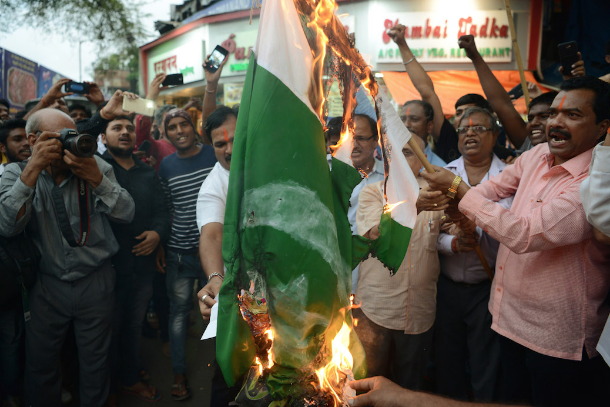Pilgrimage safety measures in Kashmir irk Muslim majority Travel ban in Indian state in response to militant attacks on Hindu temple pilgrims is hurting local people, critics say

ucanews.com reporter, Srinagar July 8, 2019
Indian government assistance for Hindus to conduct an annual pilgrimage to a cave temple in northern Jammu and Kashmir state has upset some members of the local Muslim majority.
When the 40-day Amarnath Yatra pilgrimage began on July 1, a 10 a.m to 3 p.m travel ban came into effect on trains and the state’s national highway, according to an official announcement.
Islamic militants have attacked pilgrims in the past as they trek the rigorous rocky pathways snaking around mountains to reach the cave.
The temple, 4,420 meters above sea level in the Himalayan mountains, houses a 2.7-meter-tall phallic-shaped ice sheet considered to be the symbol of a revered Hindu God, Lord Shiva.
At more than 100 army security check points in the region, body searches have become routine.
In 2017, militants targeted a bus carrying pilgrims, killing seven and injuring 19 people in the worst attack on the pilgrimage since 2000 when 21 people were killed in a grenade attack by militants.
In the past decade, at least 44 pilgrims have been killed by secessionist militant groups opposed to Indian rule.
Now security measures, particularly the travel restrictions, have become a concern for ordinary people.
Manzoor Ahmad Dar, who normally travels 25 kilometers by train daily to his office in capital Srinagar, says getting to work is now more difficult and expensive.
Students attending schools and colleges, as well as businessmen needing to transport goods, are also adversely impacted, Dar told ucanews.com.
Bashir Ahmad Basheer, chairman of an association of Kashmir Valley fruit growers and dealers, said small-scale farmers will suffer from the end of July when apple harvesting starts.
Also worried is Iqbal Ahmad, a Srinagar resident who has to take his mother every month to capital New Delhi for post-surgery medical follow-ups.
“The highway is closed for civilians now,” Ahmad said. “Airfares are skyrocketing and I have no idea what to do.”
Although the highway opens in the afternoon, travelers are not able to cover the 265 kilometers from Srinagar to Jammu before dark, when it is considered unsafe on the hilly road. Vehicles normally take 10-12 hours to cover the distance.
Kashmir’s chief religious cleric, pro-separatist leader Mirwaiz Umar Farooq, condemned the restrictions.
“Time and again, Kashmiris are subject to harassment and inconvenience as the highway is shut down for them on one pretext or other,” Mirwaiz said. “This a totally uncalled for measure.”
The pilgrimage first started when a shepherd discovered the peculiar ice formation in the cave in the late 1700s, which a Hindu priest visited and declared it the mythical home of Lord Shiva.
Until the Indian state was formed in 1947, pilgrims were only a few thousand, mostly ascetics and people from adjoining areas.
Numbers rose in the mid-1980s and then dipped when armed militancy hit the region. But now the pilgrimage is getting bigger and bigger, with hundreds of thousands undertaking it annually, and the duration has increased from two or three weeks to six weeks.
